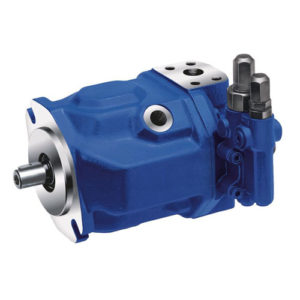Rexroth hydraulic pump has always been a word of mouth
Rexroth hydraulic pump has always been a word of mouth in the industrial machinery and equipment industry. It has the characteristics of high-pressure resistance, high efficiency, large transmission force, wide speed range and long service life. It has a high level of trust from most people. The more familiar a product is with its functional characteristics, the better it performs its function.
Which functional characteristics can be found in a Rexroth hydraulic pump? We’ll cover it in more detail below. Rexroth hydraulic piston pumps are available in versions with intermittent plates and diagonal axis depending on the tilt elements.
The intermittent plate type is that the plate has an inclination angle relative to the rotating cylinder block, which causes the piston in the pump cylinder to hesitate. The drive shaft and cylinder block axes are identical. This type of structure is simple and the rotation speed is high, but the working conditions are difficult. The contact part between the end of the press and the cutting plate is usually the weak link.



The axis of the inclined shaft type wave plate is identical to the axis of the driving shaft. It is the reciprocating movement of the piston due to the inclination of the piston mass at an angle relative to the drive axis. The flow regulation depends on the oscillating piston cylinder angle, so it is also called oscillating cylinder type. Compared with the intermittent plate type, it works reliably and has a large flow rate, but its structure is complicated.
Compared to a radial piston hydraulic pump, an axial piston hydraulic pump has a higher discharge pressure. The range of 20 to 50 MPa is generally where it can operate with high efficiency. It has a small radial size, compact structure, small volume, and light weight.
However, the structure is more complex than that of the radial piston hydraulic pump, which has higher processing and manufacturing requirements and is more expensive.
Axial piston hydraulic pumps and hydraulic motors are generally used in the hydraulic transmission systems of machine tools, metallurgy, forging, mining and lifting machinery, especially in high-power hydraulic transmission systems. To improve efficiency, axial piston pumps generally consist of main parts such as cylinder block, oil distribution vessel, piston and swing plate. There are several pistons in the cylinder block and the pistons are arranged axially, i.e., the center line of the piston is parallel to the axis of the drive shaft, so it is called axial piston pump.
They differ from reciprocating piston pumps in that the pistons not only oscillate in the cylinder, but also rotate relative to the oscillating plate. The piston connects to the winding plate with a ball end. There are monthly high and low pressure grooves in the oil distribution pan. They are separated from each other by a partition to ensure a certain degree of tightness. They are respectively connected to the inlet and outlet of the pump.
Rexroth hydraulic pump maintenance
Increased noise, increased heat, inconsistent cylinder action, difficulty or inability to generate full power, decreased speed of hydraulic cylinders or actuators, or failure of the system to operate at all are all factors that characterize a pump problem.
Below we explain the most common problems you may encounter when using a Rexroth hydraulic pump.
Pump cavity
Cavitation occurs when the pump cannot absorb the full charge of oil. When the pump starts cavitating, the noise increases and the shaft and front bearing become very hot.
Pump cavitation can also cause erratic cylinder movement, problems reaching maximum pressure, and a milky appearance of the oil.
Air leaking into the system
The air in the newly built system will soon purify itself. The system must cycle for 15 to 30 minutes without generating any pressure other than external pressure.
The trapped air will gradually dissolve in the oil and the system will transport it to the tank, where it will escape. Of course, air leakage from high places in the pipes, especially cylinder ports, can speed up the process.
Water leaking into the system
While the system is running, water entering the system can cause the oil to appear milky, but the oil will usually drain once it is turned off as the water settles to the bottom of the tank.
Oil leakage around the pump
Leaks around the shaft, leaks around the pump port, and leaks around the body casting are possible sources of oil leaks.

